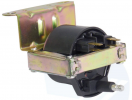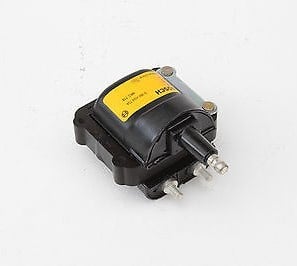You are using an out of date browser. It may not display this or other websites correctly.
You should upgrade or use an alternative browser.
You should upgrade or use an alternative browser.
Fitting SD1 ignition into a P6B
- Thread starter jp928
- Start date
cobraboy
Well-Known Member
This is interesting.
I just did the same recently with a 35DLM8 with the amplifier on the dist body. Yesterday I tested a spare 35DE8, the first gen Opus which is the type I am using at the moment. This with my 1.6 ohm coil gave massive sparks.
I am toying with the idea of either fitting the 35DLM8, removing the ballast resistor and keeping a spare amplifier in the tool kit, or, giving the 35DE8 a good service and throwing that in the boot, and making up a ballast by pass fly lead, so either way I have a get - you - home fix in the event of ignition failure on a long run / rally.
I just did the same recently with a 35DLM8 with the amplifier on the dist body. Yesterday I tested a spare 35DE8, the first gen Opus which is the type I am using at the moment. This with my 1.6 ohm coil gave massive sparks.
I am toying with the idea of either fitting the 35DLM8, removing the ballast resistor and keeping a spare amplifier in the tool kit, or, giving the 35DE8 a good service and throwing that in the boot, and making up a ballast by pass fly lead, so either way I have a get - you - home fix in the event of ignition failure on a long run / rally.
This is interesting.
I just did the same recently with a 35DLM8 with the amplifier on the dist body. Yesterday I tested a spare 35DE8, the first gen Opus which is the type I am using at the moment. This with my 1.6 ohm coil gave massive sparks.
I am toying with the idea of either fitting the 35DLM8, removing the ballast resistor and keeping a spare amplifier in the tool kit, or, giving the 35DE8 a good service and throwing that in the boot, and making up a ballast by pass fly lead, so either way I have a get - you - home fix in the event of ignition failure on a long run / rally.
Whereas I'm an advocate for GM HEI, if it ain't broke don't fix it. You can't exactly over ignite the mixture.
The main issue HEI overcomes is charge time by removing or at least minimising the fixed ballast which of course only acts as a very crude current limiter in the primary circuit - you really don't want this early in the charging cycle only to effectively prevent a short-circuit and melting the coil when the magnetic fields saturate and the impedance drops to near zero. It really shines somewhat obviously with higher revving high cylinder count engines for which time between firing is limited (clearly the Lucas solution wasn't up to the Jaguar V12 in the HE model). These higher energy systems became more or less universal by the 1990s as catalytic converters became mandatory to absolutely minimise potential misfiring as the last thing you want being unburned or partially burned fuel poisoning it. Obviously a second best to proper coil packs but effective enough and cheaper to implement. For our cars it likely won't matter much. If you race or aggressively drive then perhaps there is a case. I barely get over 2500rpm.
Also it's worth saying the system as designed is all about total spark energy (i.e. current) and not as the "sports coils" promise, higher voltage. In fact the coils optimized for this have a lower turns ratio to give a slightly lower overall voltage. Crucially very low impedance 0.3-0.7 ohm instead of 1.5 for a ballasted system and 3 for one without. Clearly simple Ohm's law gives you a maximum of a fraction over 4 amps in any old school system. HEI I believe has an absolute maximum cutoff of 7 amps and this is internally regulated. But this is highly dynamic and clearly the RMS figure over a whole cycle is a fraction of that. A typical E-core coil which you'll find in US GM products through the 1990s and into the millennium will deliver about 1.5 times the energy a typical cannister coil kicks out. You get them also on European products from the time - I think mine is from a mid-1990s Astra. The e-core coil is wrapped around an iron core which improves the efficiency and transfer of magnetic flux, so in principle it gains not only from the HEI module and the higher current but simply that more of it gets through to the secondary and then the spark plugs. And should also run slightly cooler.
Last edited:
I believe it's 0.6-0.7 Ohms. But of course remember there's a double bonus with the efficiency. It worked nicely when I temporarily rigged it up but it was indistinguishable from what I already had. It'll only be a potential benefit when pushed. Maybe a bit more ooomph might help starting too, I couldn't say... To me it seems a sensible and very cost-effective upgrade. The whole lot is £50ish so it seems little point in messing around with old school coils and rubbish Lucas ignition modules when there is a better and extremely well proven solution (as a casual search on HEI conversions well tell you). The only issue I had is you need a custom HT lead as the termination on the coil is different (I forget what the connector is called it was a couple quid and I hacked an old lead). Looks a bit like the image below. I have also a US one but the advantage with this is simple spade connectors rather than a multi-plug connector (you can buy a "pigtail" for a couple dollars - and it does look super neat). The square "frame" around it is the ferrite core which is the key to greater efficiency.


jp928
Well-Known Member
I still dont know which system is Opus - the white plastic wheel with vertical bar magnets, or the 8 pointed star wheel? The star wheel type I got cheaply came with its amplifier isolated from the dizzy body (leads ~ 12" long) to remove it from engine heat. I am working from the attached document .
FWIW that coil HT output is a male connector. My MEC717 has a female output so my current king lead will fit.
Here is a 717

 runautoparts.com.au
runautoparts.com.au
FWIW that coil HT output is a male connector. My MEC717 has a female output so my current king lead will fit.
Here is a 717

Bosch Ignition Coil MEC717 - Run Auto Parts
Buy Ignition Coil MEC717 fits TOYOTA Corolla 0980AG0703 from Run Auto Parts, your reliable supplier for Bosch 0 980 AG0 703. Benefit from our fast shipping service directly from Australia.
Attachments
Last edited:
Dunno. My distributor has a red, round, plastic bit in the center with nothing exposed. I'd love a 1,2,3 system but a bit rich for me. The trigger side is pretty much independent of the power side anyway, which is the key to the universality. It's just a transistor switch to ground effectively. whatever it is, exactly like points. The module having a high input impedance, so it's not usually fussy what you switch it with.
I'm not sure it's a case of it being a male/female connector, it might be in my case a pin type rather than a DIN type, these seem to have taken over in the later 1980s and are superior I assume.
It seems a sensible approach to remote mount it, especially in a P6 as there isn't a great deal of airflow and there are localized hot-spots everywhere. Mine is in a simple metal box as a case, old, reclaimed computer heatsinks would work nicely too.
I'm not sure it's a case of it being a male/female connector, it might be in my case a pin type rather than a DIN type, these seem to have taken over in the later 1980s and are superior I assume.
It seems a sensible approach to remote mount it, especially in a P6 as there isn't a great deal of airflow and there are localized hot-spots everywhere. Mine is in a simple metal box as a case, old, reclaimed computer heatsinks would work nicely too.
jp928
Well-Known Member
Tested the MEC1717 today . It shows less than 1ohm on my meter. With the air gap on the reluctor set at guess-what (bigger than .010") it tended to spark continuously, some very big ones too! I disconnected everything and set the gap to .008" - book says NOT less than .006" - with brass feelers. Now only sparks on command, so that seems to be fine. Using a Bosch BIM024 ignitor (Bosch no ends in 021) mounted on a piece of 8mm aluminium.

